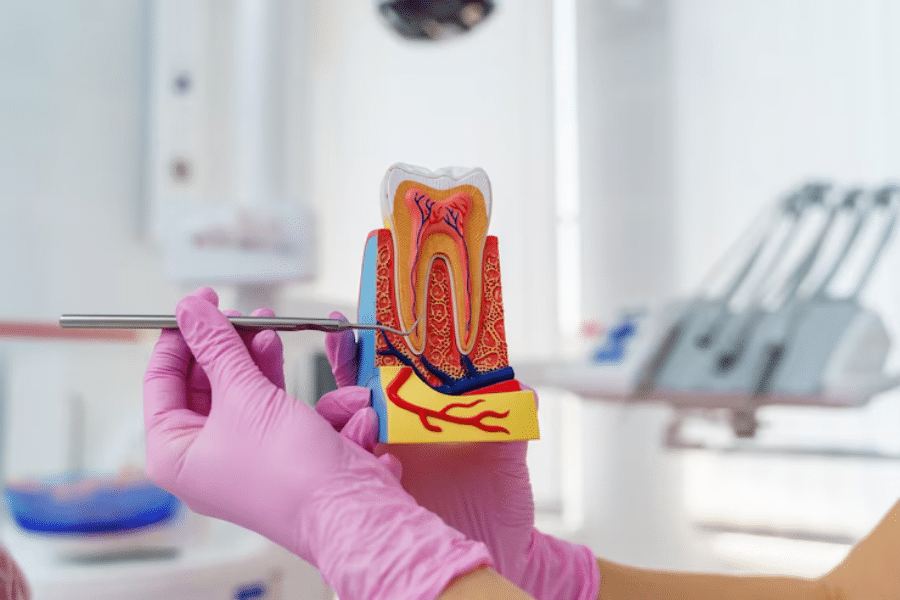Undergoing a root canal treatment can be a significant dental procedure, often necessary to save a damaged or infected tooth. While the procedure itself is critical, the recovery period is equally important to ensure proper healing and comfort. One of the key aspects of recovery is maintaining a suitable diet. Eating the right foods can aid in your healing process, minimize discomfort, and prevent complications. In this comprehensive guide, we will explore the best foods to eat after a root canal treatment, along with practical tips and dietary recommendations.
Understanding Root Canal Treatment
Before diving into the dietary recommendations, it’s helpful to understand what a root canal treatment involves and why specific foods are recommended during recovery.
What is Root Canal Treatment?
A root canal treatment is a dental procedure aimed at treating infection or damage within the tooth’s pulp (the innermost part of the tooth containing nerves and blood vessels). The process involves removing the infected or damaged pulp, cleaning and disinfecting the inner chambers, and then filling and sealing the space to prevent further infection.

Importance of Post-Treatment Care
Post-treatment care is crucial to ensure the success of the root canal procedure and to alleviate any discomfort. Your dentist will provide specific instructions on oral hygiene and activities, but diet plays a significant role in the recovery process. Eating the right foods can help in several ways:
- Minimize Pain and Discomfort: Soft and non-irritating foods reduce the risk of aggravating the treated area.
- Promote Healing: Nutrient-rich foods support tissue repair and overall health.
- Prevent Complications: Avoiding hard or sticky foods can prevent damage to the temporary filling or crown.
Best Foods to Eat After Root Canal Treatment

Soft Foods
Soft foods are gentle on your teeth and gums, reducing the risk of irritation or pain. They are easy to chew and swallow, making them ideal for the initial recovery period.
Examples of Soft Foods:
- Mashed Potatoes: Creamy and easy to eat, mashed potatoes are a comforting option.
- Yogurt: Smooth and cool, yogurt can be soothing and provides beneficial probiotics.
- Applesauce: This soft and sweet option is easy on the teeth and provides vitamins.
- Cottage Cheese: Soft and high in protein, cottage cheese is a nutritious choice.
- Scrambled Eggs: Lightly cooked eggs are easy to chew and packed with protein.
Soups and Broths
Soups and broths are excellent choices, especially in the days immediately following your root canal. They provide hydration and essential nutrients without requiring much chewing.
Examples of Soups and Broths:
- Chicken Broth: Warm and nourishing, chicken broth is easy to consume and can help with hydration.
- Vegetable Soup: Pureed vegetable soup is a great way to get vitamins and minerals.
- Tomato Soup: Smooth and comforting, tomato soup can be enjoyed warm or at room temperature.
Smoothies and Shakes
Smoothies and shakes offer a versatile way to consume a variety of nutrients without needing to chew. They can be tailored to your taste preferences and nutritional needs.
Examples of Smoothies and Shakes:
- Fruit Smoothies: Blend fruits like bananas, berries, and mangoes with yogurt or milk for a refreshing drink.
- Green Smoothies: Incorporate spinach or kale with fruits and a liquid base for a nutrient-packed option.
- Protein Shakes: If you need additional protein, consider adding protein powder to your smoothies.
Soft Proteins
Ensuring adequate protein intake is important for healing and recovery. Soft proteins are easier to manage and can help maintain muscle mass and repair tissues.
Examples of Soft Proteins:
- Fish: Baked or steamed fish like salmon or tilapia is soft and rich in omega-3 fatty acids.
- Tofu: Soft tofu can be incorporated into various dishes and is a good source of plant-based protein.
- Ground Meat: Lean ground meats, such as turkey or chicken, can be cooked until soft and added to soups or sauces.
Cooked Vegetables
While raw vegetables may be too hard and crunchy immediately after your procedure, cooked vegetables can provide essential vitamins and minerals without causing discomfort.
Examples of Cooked Vegetables:
- Steamed Carrots: Soft and easy to digest, steamed carrots are a healthy choice.
- Mashed Sweet Potatoes: Nutritious and flavorful, mashed sweet potatoes are gentle on the teeth.
- Boiled Peas: Soft and easy to eat, peas are a good source of fiber and vitamins.
Dairy Products
Dairy products are generally soft and can provide calcium and protein, which are important for overall health and recovery.
Examples of Dairy Products:
- Milk: Provides hydration and essential nutrients.
- Cheese: Soft cheeses like mozzarella or brie can be eaten in small amounts.
- Pudding: Smooth and creamy, pudding can be a comforting treat.
Foods to Avoid After Root Canal Treatment

While certain foods can aid in your recovery, others should be avoided to prevent complications and discomfort.
Hard and Crunchy Foods
Hard foods can damage the treated tooth or dislodge temporary fillings or crowns.
Examples to Avoid:
- Nuts
- Hard candies
- Chips
- Raw vegetables (like carrots and celery)
Sticky and Chewy Foods
Sticky foods can adhere to the treated area, causing discomfort and potentially disrupting the healing process.
Examples to Avoid:
- Caramel
- Chewing gum
- Gummy candies
- Taffy
Hot and Spicy Foods
Hot and spicy foods can irritate the treated area and increase discomfort.
Examples to Avoid:
- Spicy sauces
- Hot peppers
- Curry dishes
Acidic Foods and Drinks
Acidic foods and drinks can cause irritation and discomfort around the treated tooth.
Examples to Avoid:
- Citrus fruits (like oranges and lemons)
- Vinegar-based dressings
- Soda
- Wine
Tough Meats
Tough meats require significant chewing, which can strain the treated area and cause pain.
Examples to Avoid:
- Steak
- Pork chops
- Jerky
Practical Tips for Eating After Root Canal Treatment
Timing and Frequency
- Eat Small, Frequent Meals: Eating smaller meals more frequently can prevent strain on the treated area and ensure you get adequate nutrition.
- Wait Until Numbness Wears Off: Avoid eating until the numbness from the anesthesia has completely worn off to prevent accidental biting of your tongue or cheeks.
Chewing Techniques
- Chew on the Opposite Side: If possible, chew on the side of your mouth opposite the treated tooth to avoid pressure and discomfort.
- Take Small Bites: Smaller bites are easier to manage and reduce the risk of irritation.
Hydration
- Drink Plenty of Water: Staying hydrated is crucial for overall health and can help keep your mouth clean.
- Avoid Using Straws: Using a straw can create a suction that might disturb the healing site.
Oral Hygiene
- Maintain Good Oral Hygiene: Follow your dentist’s instructions for brushing and flossing. Be gentle around the treated area to avoid irritation.
- Rinse Gently: Use a warm saltwater rinse to keep the area clean without being too harsh.
Eating the right foods after a root canal treatment is essential for a smooth recovery and overall well-being. Opt for soft, nutritious, and easy-to-chew options to minimize discomfort and promote healing. Avoid hard, sticky, hot, and acidic foods that can cause irritation or complications. By following these dietary guidelines and tips, you can ensure a more comfortable and effective recovery process.
Always consult with your dentist for personalized advice and follow their specific recommendations for post-treatment care. With the right approach, you can support your recovery and maintain excellent oral health after your root canal treatment.

